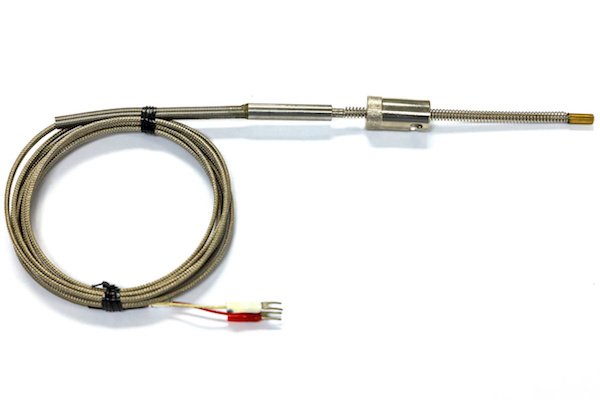
Sponsored by Pyrosales
How Does a Thermocouple Work?
Read a summary using the INOMICS AI tool
There are a lot of reasons why knowing the temperature is important. For one, knowing the temperature in your surroundings will let you know how to adjust your clothing. It is very challenging to be productive during the day if your clothes aren’t appropriate for the weather you’re having. How, for instance, can you work if you’re excessively sweating or shivering?
Thermocouples are great devices that can help you determine the temperature. In general, a thermocouple is a device that uses sensors in order to measure temperature. These devices usually come with two wired legs made from different types of metal and are welded together to form a junction in one end. An electromotive force or voltage occurs when the device identifies a temperature difference between any of the two points of the circuit. You can interpret the voltage from the device using different thermocouple reference tables.
Thermocouples come in different types made with different metals, and are commercially available today. Pyrosales Thermocouples, for example, offer a wide variety of these devices suitable for industrial, commercial, and residential use. You can use thermocouples to measure temperature in diesel engines and thermostats. Some also use the device as hospital thermometers, and to test the diagnostics of new vehicles.

You might not know it, but thermocouples are actually very common in home appliances and fixtures. The technology of thermocouples is also utilized in ovens, boilers, and water heaters as safety features. Whenever the pilot light of these devices is out, the thermocouple acts by stopping the gas valve from operating, thus conserving energy. This feature will also prevent heat from escaping, making your electronic appliances more energy-efficient. The rationale behind thermocouples is based on three effects.
1. Seebeck Effect
The Seebeck effect states that whenever there is a temperature difference between two different electrical semiconductors or conductors, the reaction would produce a voltage difference between the two materials. The electromotive force generated by this working principle varies depending on the combination of metals used. This means that even if copper and bronze are joined together in one junction, the electromotive force that these surfaces create also differs.
This principle works because whenever heat is applied to one of the metal semiconductors or conductors, all of the heated electrons travel toward the other or cooler surface. If both of the metal semiconductors or conductors are connected in an electrical circuit, the electromotive force created by the metals will flow through that circuit. The Seebeck effect was named after Thomas Johann Seebeck, who discovered the phenomenon back in the 1800s.
2. Peltier Effect
In its simplest sense, the Peltier effect states that when two different metals are joined together in order to form two different junctions, the level or gravity of the electromotive force produced in the circuit is different because of the temperature differences of the two junctions.
This working principle also states that the heating of one junction and the cooling of the other can create a stronger electromotive force between the joined circuits. This means that even when different types of metals produce different levels of heat, the properties of one metal can significantly affect the other metal’s ability to produce and maintain heat. Jean Charles Athanase Peltier, a French physicist, discovered this phenomenon in 1834.
3. Thomson Effect
The Thomson effect is the absorption or evolution of heat the moment an electric current passes between a circuit that is composed of different materials, creating different temperatures along its length. Even if two metal semiconductors or conductors are joined in one circuit, these metals still create a different electromotive force due to the temperature gradient of its surfaces.
The transfer of the electromotive force between different metals is placed over something else in order to produce heat, which is associated with the electrical resistance that is unique to the properties of the metal semiconductors or conductors. This phenomenon was discovered by British physicist William Thomson back in 1854.
Knowledge Is Power
Regardless of the type of thermocouple you’re eyeing to invest in, it’s important that you’re knowledgeable about how this device works. Although there are countless brands that sell thermocouples, it’s always important that you know how you’re going to use the device, the temperature ranges it will be exposed to, and if the device requires any chemical resistance. The more you know about thermocouples, the easier it’ll be for you to choose an appropriate type and material. This information can also help you make the most out of your investment and avoid any safety risks!
-
- Conferencia
- (Hybrid)
- Posted 1 year ago
Sixteenth International Conference on The Constructed Environment, Universidad de Navarra, Pamplona, Spain
Between 14 May and 15 May in Pamplona, España -
- Executive / Senior Industry Job
- Posted 4 days ago
Civil Engineering Works Supervisor (SCE-SAM-CE-2025-190-GRAP)
At CERN in Genève, Suiza -
- Conferencia
- Posted 4 days ago
15th International Conference "Modern Building Materials, Structures and Techniques"
Between 12 May and 16 May in Vilnius, Lituania








